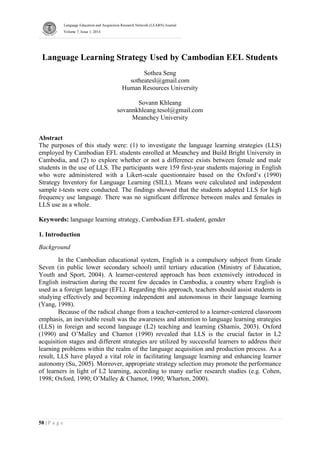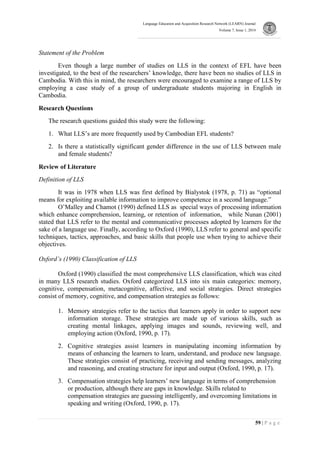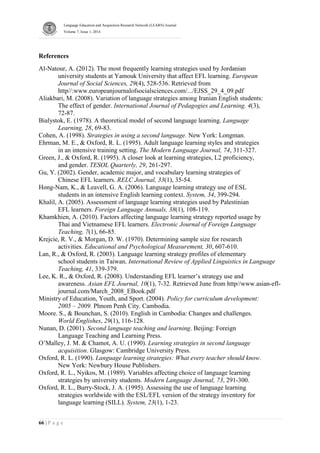This study investigated the language learning strategies used by Cambodian EFL students. It surveyed 159 students using a questionnaire based on Oxford's Strategy Inventory for Language Learning. The findings were:
1) Students reported a high overall use of language learning strategies, with the most frequently used being metacognitive strategies.
2) There was no significant difference between male and female students in their overall use of language learning strategies. Some individual strategies showed differences but not the overall use.
3) Indirect strategies like metacognitive, affective and social strategies were used more frequently than direct strategies like memory, cognitive and compensation strategies.









